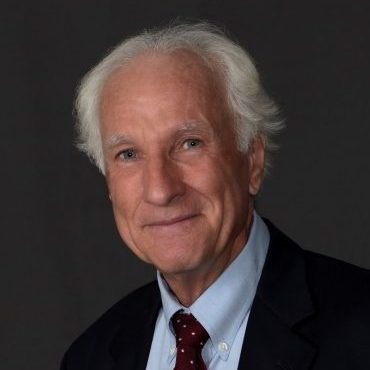“Renewed efforts are underway to subvert Bayh-Dole from an engine driving innovation into a weapon for government price controls. Even though the Bush, Obama and Trump Administrations wisely rejected their theories, the critics keep banging the drum, and some in Congress are dancing to their tune.”
 A just-released study co-sponsored by the Biotechnology Innovation Organization (BIO) and AUTM provides new evidence of the significant contribution academic patent licensing makes to the U.S. economy. The report is the most recent in a series, and the numbers are astounding.
A just-released study co-sponsored by the Biotechnology Innovation Organization (BIO) and AUTM provides new evidence of the significant contribution academic patent licensing makes to the U.S. economy. The report is the most recent in a series, and the numbers are astounding.
Here’s Business Wire’s take:
The report, “The Economic Contribution of University/Nonprofit Inventions in the United States: 1996-2017,” documents the sizeable return that US taxpayers receive on their investment in federally funded research. It shows that, during a 22-year period, nonprofit patents and the subsequent licensing to industry bolstered US industry gross output by up to $1.7 trillion, US GDP by up to $865 billion, and supported up to 5.9 million person years of employment.
“Over the past 20 years nearly 60% of all new drugs worldwide were created in the US alone – more than in the rest of the world combined,” said Hans Sauer, BIO’s Deputy General Counsel and Vice President. “Thanks to the enduring effectiveness of the Bayh-Dole Act, our nation’s carefully balanced ecosystem of publicly and privately funded life-sciences research and development activity continues to turn foundational knowledge into real-life medicines and treatments. This updated study demonstrates that fact.”
This couldn’t come at a better time. Renewed efforts are underway to subvert Bayh-Dole from an engine driving innovation into a weapon for government price controls. Even though the Bush, Obama and Trump Administrations wisely rejected their theories, the critics keep banging the drum, and some in Congress are dancing to their tune.
Addressing the Critics
Readers of IP Watchdog got an insight into the nature of the debate through two articles last month: the first refuting the claims of the critics, followed by their reply.
The essence of the debate is this: Bayh-Dole either mandates that federally-funded inventions are managed with a minimum of Washington oversight or it’s a trap for the government to take products from university licensees if it doesn’t like their price.
For 40 years, the answer has been the former, and the new study underscores the result. University/industry alliances are a significant part of the U.S. economy. Countries around the world have adopted versions of Bayh-Dole as the gold standard for managing government- supported R&D.
But it’s the pre-Bayh-Dole era the critics hope to restore. Then, federally funded inventions were micromanaged from Washington and the incentives of the patent system shoved aside. The result: less than 5% of 28,000 inventions were licensed. Even worse, the Comptroller General found that not a single new drug had been developed under this policy despite billions of taxpayer dollars invested in the National Institutes of Health (NIH).
It was clear that American taxpayers were not getting the return on investment they deserved from billions of dollars spent annually on federally funded R&D. Unlike today, in 1980 it was still possible to craft bipartisan solutions for critical problems. A Democrat, Senator Birch Bayh, and a Republican, Senator Bob Dole, agreed to work together to solve it—and they did.
The resulting law provides authorities and incentives allowing universities and other contractors to own inventions made with government support. It allows federal laboratories to license their patented discoveries. Because few universities had tech transfer offices at the time, Congress included a “march-in rights” provision, so the government could issue licenses if the university wasn’t effectively managing the technology. The government can also march in if the licensee can’t meet the needs of a national emergency.
Bayh-Dole gave companies confidence that the rules of the game were clearly laid out. But the critics developed a counter narrative. Twenty years after enactment, they “discovered” a secret meaning in the march-in rights language: the government could march in if a product isn’t “reasonably priced.”
We’ve shown many times before that the first march-in trigger is geared toward insuring that federally funded inventions are effectively licensed and brought to the marketplace, and not for price control.
I remember reading the law review article where this theory first appeared. The authors cited non-Bayh-Dole hearings and critics of the law to build their case. I laughed and filed it away. But I wasn’t laughing when their op-ed “Paying Twice for the Same Drugs” appeared in The Washington Post.
I called my former boss, Senator Birch Bayh, and said we had to respond. He got in touch with Senator Dole and they sought to write a counter article saying that price controls are not part of their law. The Washington Post said no; they would have to settle for a much shorter letter to the editor, which soon ran. The senators did not write that letter, as the critics now allege, because they were in the hip pocket of big drug companies. They wrote it because the theory being touted was wrong and would have wrecked the law.
There things stood, until a petition was filed with the NIH asking it to march in against a drug made from a government supported invention because it wasn’t reasonably priced. The petition misrepresented the report of the Senate Judiciary Committee on Bayh-Dole (which I wrote) to bolster their case.
At my request, Senator Bayh appeared at NIH’s fact-finding meeting to oppose the petition as unauthorized under the law. NIH agreed and dismissed the motion, as it has with all the others based on this flawed theory.
In his IP Watchdog article, one of the main proponents of the reasonable pricing theory, Jamie Love, asserts: “It should be noted that Senator Bayh himself, in a March 3, 1997 letter to then-HHS Secretary Donna Shalala, proposed regulations on licensing to protect consumers from unreasonably high prices for medical care in the Cellpro case, when he represented Cellpro.”
Either he didn’t read or didn’t understand Senator Bayh’s letter. This case wasn’t about how a product was priced, but whether or not good faith efforts were being made to commercialize a federally funded invention.
Cell Pro was being sued for patent infringement by the licensee of an invention Johns Hopkins University made with NIH funding. It was asking NIH to march in because the licensee hadn’t commercialized the invention. As Senator Bayh stated, such inaction could trigger the march in provision. He wasn’t asking NIH to “protect consumers from unreasonably high prices for medical care” because that wasn’t the issue—the federally funded discovery hadn’t been developed. Cell Pro was the only party with a product on the market.
NIH dismissed the petition, concluding that the licensee was making good faith efforts to develop the invention.
Pricing Based on Whims Won’t Work
But let’s consider how the critics want Bayh-Dole to work. Under their interpretation, a company licenses a federally funded invention, beginning the arduous journey of commercialization. In the case of a drug, licensees can expect to spend over $1 billion and a decade of development to bring it to market.
If they’re lucky, they beat the odds and have a product that makes money during the remaining life of the patent. But then comes a nasty surprise. Someone files a petition with the agency that funded the university’s research saying that because the product isn’t “reasonably priced,” it should march in and license the developer’s competitors.
When the company asks how a reasonable price is determined, they learn that since there’s no definition in the statute, it’s completely arbitrary. Stunned, they realize that the very fate of their business rests on the whims of the bureaucracy. Would anyone ever license a government funded invention if Bayh-Dole worked this way?
Last year, there were 59 new therapies approved by the Food and Drug Administration. Sixty four percent came from small biotech companies. In the life sciences, like other industries, small companies drive innovation. Many of these companies spin out of universities around a federally funded invention. They are highly reliant on securing long term venture funding.
Would any VC put their money into such a company knowing that if they are successful, anyone can file a petition alleging that their drug is priced too high so the government should march in? Do you think foreign competitors would hesitate to use this club against us? And this scenario would not be limited to drugs but would apply to any product made under Bayh-Dole. If this theory were ever adopted, the result would not be lower drug prices, it would be fewer drugs—and the loss of U.S. leadership in the life sciences.
The CRADAS Example
The critics did get one chance to implement their theory in the real world. Under political pressure, NIH was coerced into including a stipulation that products arising from its Cooperative R&D Agreements (CRADAS) with industry must be “reasonably priced.” The result wasn’t a sudden lowering of drug costs—it was the collapse of CRADAS. In Love’s IP Watchdog rebuttal, he would have us believe that NIH simply didn’t understand the data.
Actually, NIH had a good idea what was causing the problem and reported their findings to Congress. To examine the impact of the reasonable pricing experiment, NIH convened panels of scientists, representatives from advocacy groups, federal agencies and industry. “The panels concluded that the policy did not serve the best interests of technology development and recommended to the Director, NIH, that the language be rescinded. The Director, NIH, accepted the recommendation, and the policy was revoked in 1995.”
When revoking the provision, NIH Director Harold Varmus stated:
An extensive review of this matter over the past year indicates that the pricing clause has driven industry away from potentially beneficial scientific collaborations with PHS (Public Health Service) scientists without providing an offsetting benefit to the public. Eliminating the clause will promote research that can enhance the health of the American people.
Once the reasonable pricing provision was removed, the number of CRADAS rebounded.
First Do No Harm
Misusing the march in rights provision is only part of the critics’ plan. They don’t like patents. They routinely object to every exclusive license promulgated by the NIH. They want to “decouple” life science R&D from patents and markets, thus putting the government in charge of drug development. Think about that for a minute.
As Congress is now discovering, moving beyond sound bites to policies that can lower drug prices without undermining innovation is no easy task. But one thing is clear—gutting Bayh-Dole will only make things worse. Hopefully, the new study showing what it’s doing for our economy will serve as a wakeup call.
Like physicians, lawmakers are well advised to “first do no harm” in their remedies. Rejecting quack theories is a good place to start.
Image Source: Deposit Photos
Photo by sumners
ID: 8633722

![[IPWatchdog Logo]](https://ipwatchdog.com/wp-content/themes/IPWatchdog%20-%202023/assets/images/temp/logo-small@2x.png)

![[Advertisement]](https://ipwatchdog.com/wp-content/uploads/2024/04/Artificial-Intelligence-2024-REPLAY-sidebar-700x500-corrected.jpg)
![[Advertisement]](https://ipwatchdog.com/wp-content/uploads/2024/04/UnitedLex-May-2-2024-sidebar-700x500-1.jpg)
![[Advertisement]](https://ipwatchdog.com/wp-content/uploads/2024/04/Patent-Litigation-Masters-2024-sidebar-700x500-1.jpg)

![[Advertisement]](https://ipwatchdog.com/wp-content/uploads/2021/12/WEBINAR-336-x-280-px.png)
![[Advertisement]](https://ipwatchdog.com/wp-content/uploads/2021/12/2021-Patent-Practice-on-Demand-recorded-Feb-2021-336-x-280.jpg)
![[Advertisement]](https://ipwatchdog.com/wp-content/uploads/2021/12/Ad-4-The-Invent-Patent-System™.png)






Join the Discussion
No comments yet.